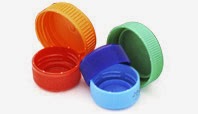The fluid expertise is not a necessary attribute on the part of design engineers when it comes to injection molding. The major PET moulds manufacturer India succumbs to some guidelines that help increasing the efficiency of injection molding process.
1. Maintaining thickness of the walls
The parts of the plastic must have even heaviness around the edges. The engineer should be aware of the fluid dynamics in this respect. To have a specific design parameter helps averting various manufacturing defects of mold making. Even the minutest abnormality may cause grave quality errors.
2. Judiciously choosing the radius of the corners
During the injection molding process, the molten plastics gel through a lot of turns and edges. The well-rounded corners help in regulating the flow of the plastic. Hence, the design engineers should pay attention to generously adopting the corner size of the mold. On the opposite, sharp edges elongate the cooling process which is a hindrance to effective manufacturing and delivery.
3. Ascertain the fluid dynamics
Plastic, being an absolute fluid calls for a clear understanding about the dynamics of the fluid management (flow dynamics). Such intense research helps eliminating common errors associated with injection molding. The process of injection molding precisely depends upon the molding of the plastic pet molds. The engineers should reduce alteration in plastic velocities, pressure and viscosities especially when the molding process is underway.
4. Strategic gate location
Managing the thickness of the mold walls is not always easy to achieve. Under such scenario an adequate gate location solves the purpose. In the absence of ideal gate location manufacturing uniform molds becomes an uphill task. The best of the gate locations is one wherein, the mold enters the broadest part of the cavity and then seeps down to the narrower areas effortlessly.
All the afore-mentioned tips should be kept in mind to ensure smooth injection molding process on the part of the manufactures.
1. Maintaining thickness of the walls
The parts of the plastic must have even heaviness around the edges. The engineer should be aware of the fluid dynamics in this respect. To have a specific design parameter helps averting various manufacturing defects of mold making. Even the minutest abnormality may cause grave quality errors.
2. Judiciously choosing the radius of the corners
During the injection molding process, the molten plastics gel through a lot of turns and edges. The well-rounded corners help in regulating the flow of the plastic. Hence, the design engineers should pay attention to generously adopting the corner size of the mold. On the opposite, sharp edges elongate the cooling process which is a hindrance to effective manufacturing and delivery.
3. Ascertain the fluid dynamics
Plastic, being an absolute fluid calls for a clear understanding about the dynamics of the fluid management (flow dynamics). Such intense research helps eliminating common errors associated with injection molding. The process of injection molding precisely depends upon the molding of the plastic pet molds. The engineers should reduce alteration in plastic velocities, pressure and viscosities especially when the molding process is underway.
4. Strategic gate location
Managing the thickness of the mold walls is not always easy to achieve. Under such scenario an adequate gate location solves the purpose. In the absence of ideal gate location manufacturing uniform molds becomes an uphill task. The best of the gate locations is one wherein, the mold enters the broadest part of the cavity and then seeps down to the narrower areas effortlessly.
All the afore-mentioned tips should be kept in mind to ensure smooth injection molding process on the part of the manufactures.


